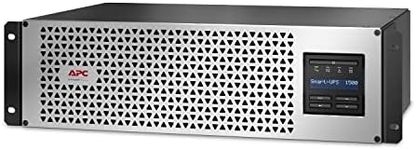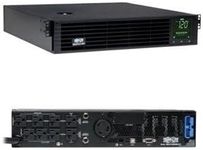Buying Guide for the Best Rackmount Ups
When choosing a rackmount UPS (Uninterruptible Power Supply), it's important to consider several key specifications to ensure you select the right model for your needs. A rackmount UPS is designed to provide backup power and protect your equipment from power surges, outages, and other electrical disturbances. Understanding the key specs will help you make an informed decision and ensure your critical equipment remains operational during power disruptions.Power Capacity (VA/Watts)Power capacity, measured in Volt-Amps (VA) and Watts, indicates the maximum load a UPS can support. This spec is crucial because it determines how much equipment you can connect to the UPS. To navigate this spec, consider the total power consumption of all devices you plan to protect. Small setups may require a UPS with a capacity of 500-1000 VA, while larger setups with multiple servers might need 2000 VA or more. Choose a UPS with a capacity that exceeds your total power needs to ensure reliable performance.
RuntimeRuntime refers to how long the UPS can provide power to your equipment during an outage. This is important because it determines how much time you have to safely shut down your equipment or switch to an alternative power source. Runtime can vary from a few minutes to several hours. Short runtimes (5-10 minutes) are suitable for brief outages, while longer runtimes (30 minutes or more) are ideal for critical systems that need extended backup. Assess your needs based on the typical duration of power outages in your area and the criticality of your equipment.
Form FactorThe form factor of a rackmount UPS refers to its physical size and how it fits into your server rack. This is important for ensuring the UPS can be properly installed in your existing setup. Rackmount UPS units come in different sizes, typically measured in rack units (U). Common sizes include 1U, 2U, and 3U. Choose a form factor that fits within the available space in your rack and allows for proper airflow and maintenance access.
Battery Type and ReplacementThe type of battery used in a UPS and its replacement options are important for long-term maintenance and reliability. Most UPS units use sealed lead-acid (SLA) batteries, which are reliable and cost-effective. However, some models may use lithium-ion batteries, which offer longer lifespans and faster recharge times. Consider the ease of battery replacement and the availability of replacement batteries. If you need a UPS for critical applications, choose a model with hot-swappable batteries to minimize downtime during maintenance.
Outlets and ConnectivityThe number and type of outlets on a UPS determine how many devices you can connect and protect. This is important for ensuring all your critical equipment can be powered by the UPS. Look for a UPS with a sufficient number of outlets, including a mix of standard and IEC outlets if needed. Additionally, consider models with network management capabilities, such as USB or Ethernet ports, which allow for remote monitoring and management of the UPS.
Surge Protection and FilteringSurge protection and filtering are essential features that protect your equipment from power spikes and electrical noise. This is important for preventing damage to sensitive electronics and ensuring clean power delivery. Look for a UPS with robust surge protection ratings and advanced filtering technologies. Higher surge protection ratings (measured in joules) offer better protection. Choose a UPS with these features if you have sensitive or high-value equipment that requires clean and stable power.
Warranty and SupportThe warranty and support options provided by the manufacturer are important for ensuring long-term reliability and peace of mind. A good warranty covers the UPS and its batteries for a specified period, typically 2-3 years. Consider the level of customer support and availability of service centers. Choose a UPS from a reputable manufacturer that offers a comprehensive warranty and reliable support to address any issues that may arise during the UPS's lifespan.



















